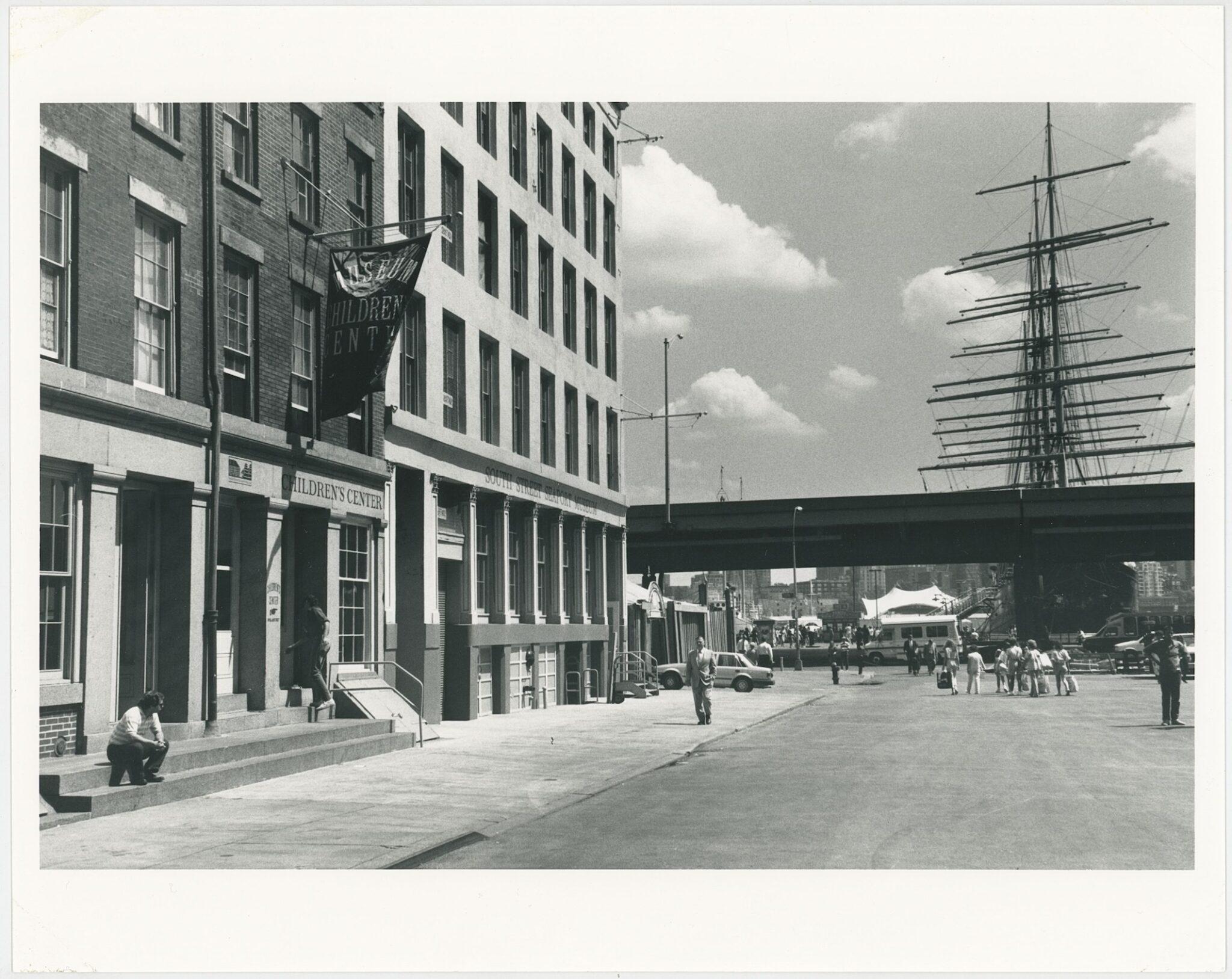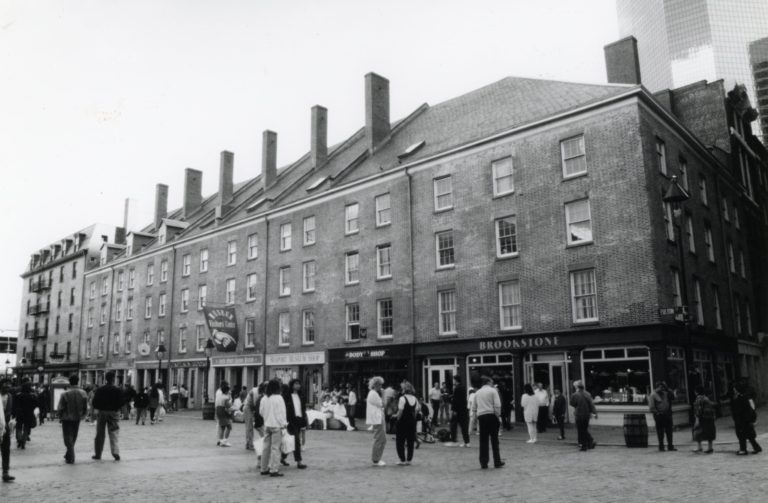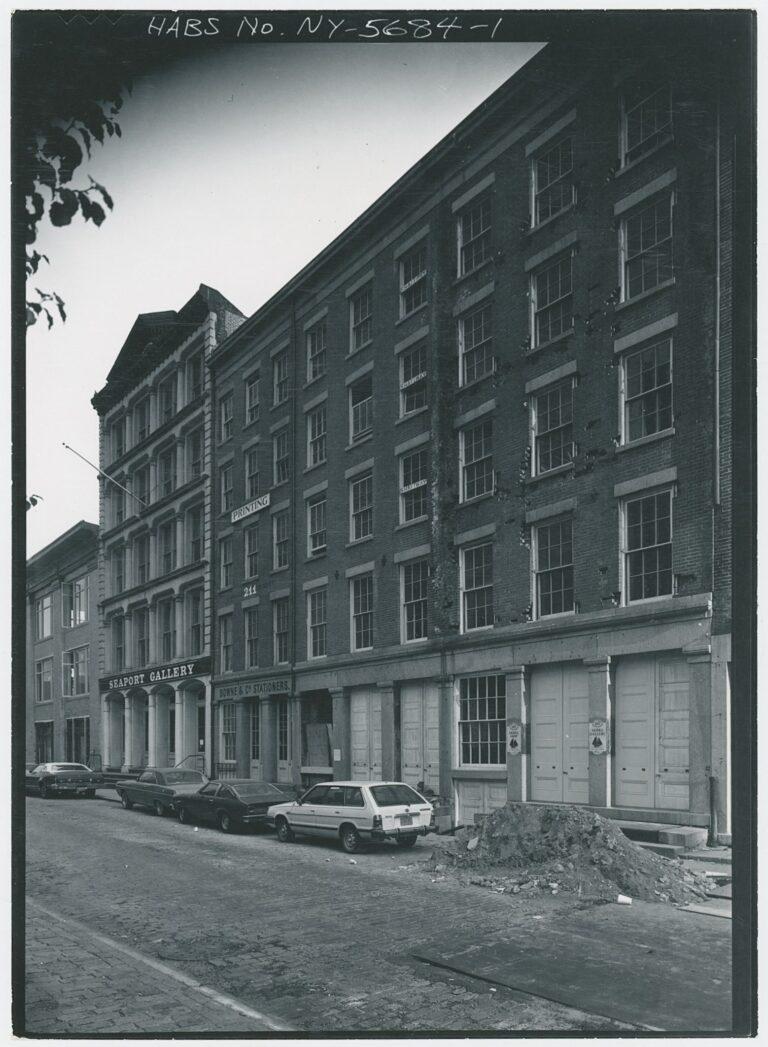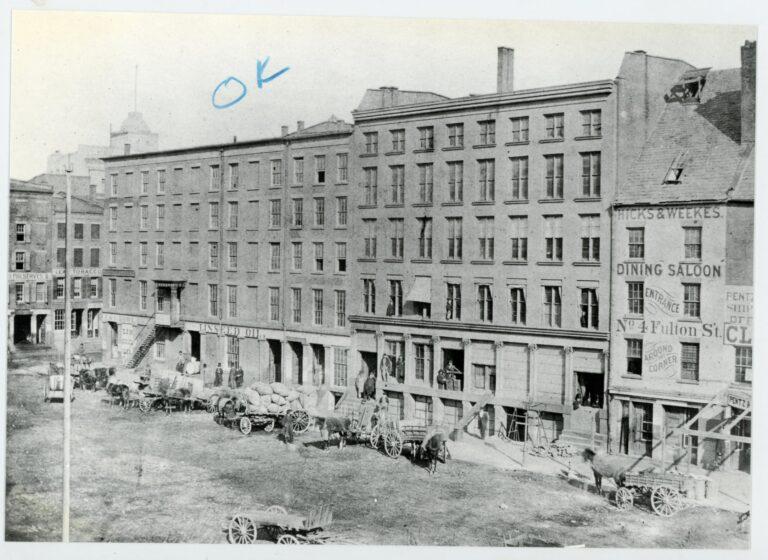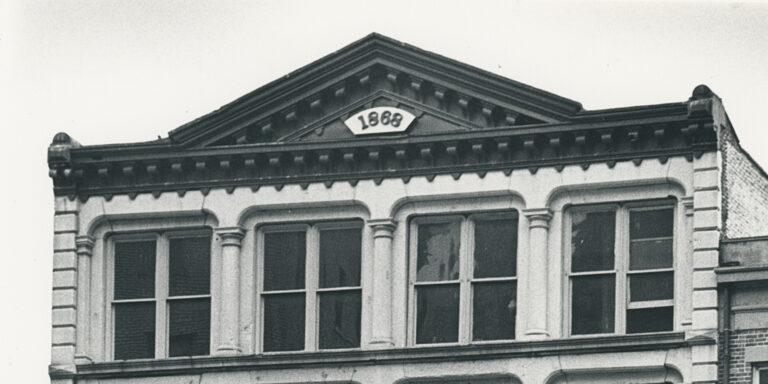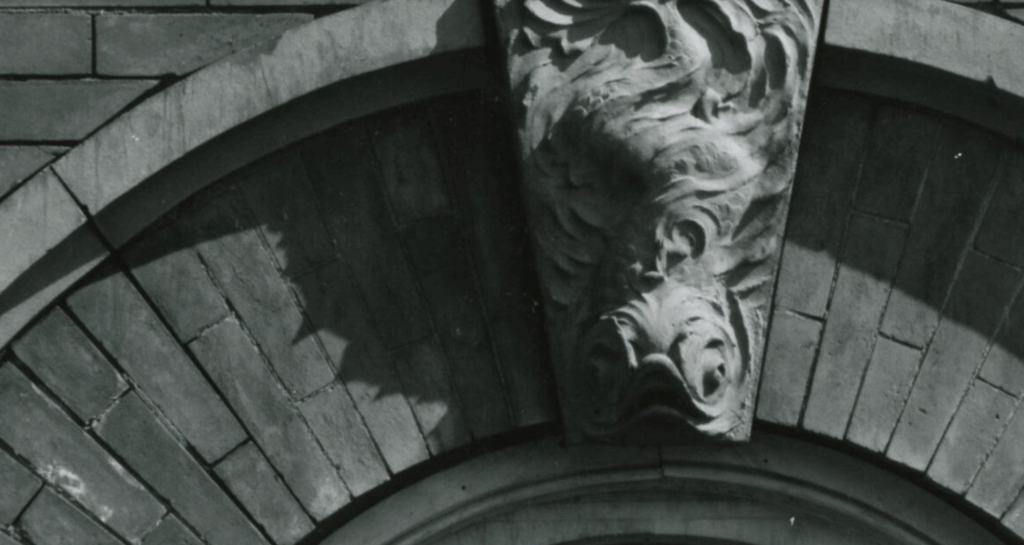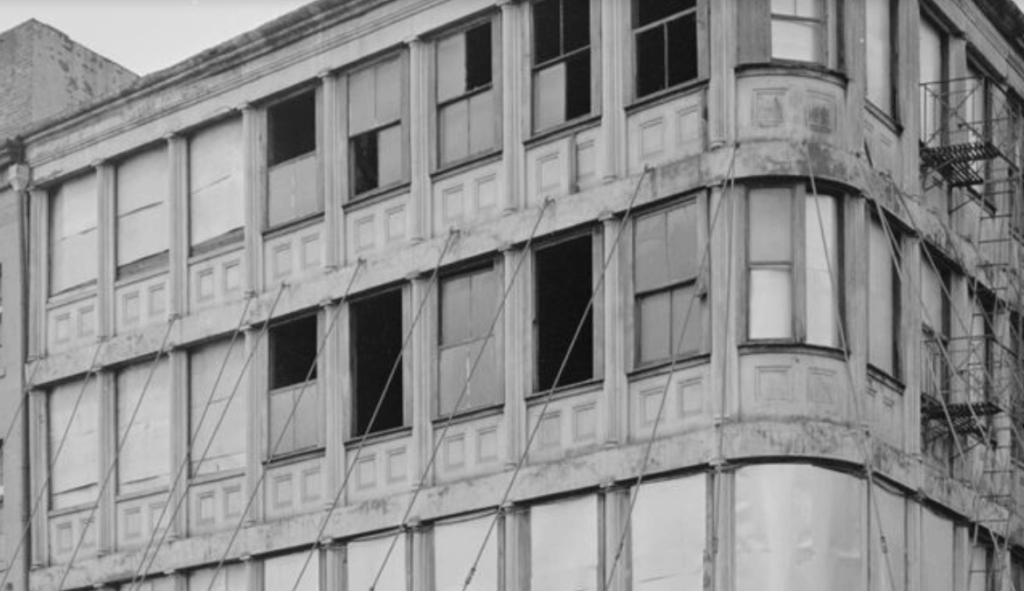The 18th- and 19th-century buildings of the South Street Seaport Historic District exist today because of the South Street Seaport Museum. In the 1960s, New York City was undergoing one of its most dramatic reinventions and the tension between urban renewal and historic preservation was center stage. After convincing the city to spare the buildings from the wrecking ball, the Museum’s founders—a group of passionate preservationists—set out to restore the area’s structures and repopulate South Street, “the Street of Ships,” with historic vessels.
The buildings in the district span a period of almost 200 years, representing several styles of mercantile architecture including Georgian, Federal, and Greek Revival, as well as the later Italianate and Romanesque Revival styles. Today, the Seaport Museum partially occupies many of the original structures that are important artifacts of New York’s history.
Click below to learn more about each of the buildings, their fascinating histories, and how you can experience some of them first-hand!
More About the History of New York’s South Street Seaport
New York as we know it would not exist without the contributions of the Lenape people, who called this island Manahatta. For centuries before Europeans colonized these shores, these original inhabitants cultivated the Indigenous territory of Lenapehoking and used its waterways for navigation and fishing.
The present-day South Street Seaport is located on the island, known as Lenapehoking, originally inhabited by the Lenape people. The stretch of land along the East River was recognized as an ideal spot for shipping enterprises in the 17th century when the Dutch West India company established New Amsterdam in 1624.
As New York City’s population and trades grew during the late 17th and 18th centuries, the City of New York and private owners gradually modified the East River shoreline with wharves, docks, and slips. Beginning in the mid-19th century, emerging changes in ships’ docking and ship technology had a profound effect on the South Street Seaport and its port activities.
By the late 19th and early 20th centuries, the seaport was no longer the commercial and transportation hub it had once been. The opening of the Brooklyn Bridge in 1883 and the first subway to Brooklyn in 1908 dispersed the crowds that once commuted through the seaport by ferry. By the mid-20th century, many of the old seaport buildings had been neglected and succumbed to demolition.
In the 1960s, the city spared the historic buildings from the wrecking ball and the Museum’s founders set out to restore the area’s structures, advocating for the creation of the original Port of New York by repopulating South Street with historic ships, and creating the South Street Seaport Historic District.
Today, the South Street Seaport Museum and the neighborhood remain a unique New York experiment, both protecting the city’s past and charting a new course for its future.
Read Collections Chronicles Blog Posts Related to Architecture
Seaport Architectural Gem
See even more of the architecturally significant buildings in South Street Seaport Historic District thanks to materials from the Museum’s archives, documenting their stories, styles, businesses and occupants, changes in use, as well as their restoration, or losses.
The Writer and the Wrecking Ball
Explore the Museum’s collections of architectural elements collected and donated by author Joseph Mitchell (1908–1996).
Brick by Brick
Bricks have been a part of New York City history since Dutch settlement in the 17th century. Learn more about bricks in the Museum’s collections.
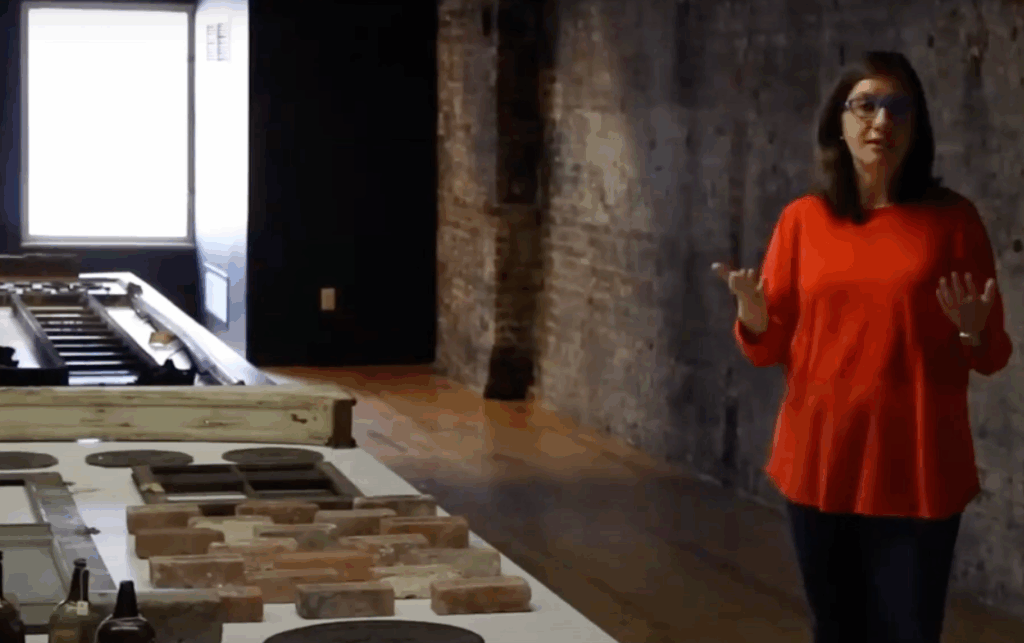
Inside Schermerhorn Row
Take a virtual tour of some of the Seaport Museum’s Landmarked Buildings. Visit the upper floors and hear about the buildings’ incredible history and developments of the remains of two 150-year-old hotels made famous by New Yorker writer Joseph Mitchell’s “Up in the Old Hotel.”

